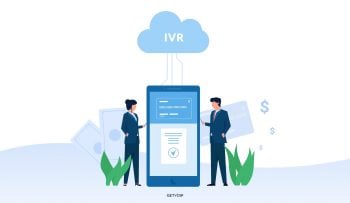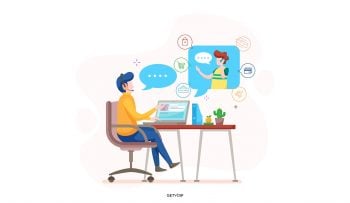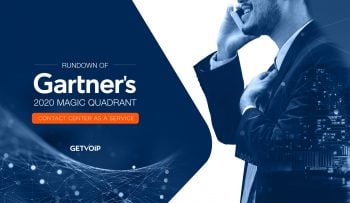A modern day contact center solution differs from a traditional call center software based environment, primarily in the ways the interactions and platform are managed and the goals of each call flow. With a could based contact center solution, an agent has the ability to more transparently represent the company, in contrast to an office worker that might represent himself first and the company second. Bearing that in mind, contact centers are not places for deep rapport, but more like a neural network, with each agent working in concert to get the message out to customers.
There are more ways than ever to reach the customer, more ways to communicate internally, and more ways to monitor and analyze data. Even the addition of helpdesk software can make a big difference in customer experience, and there is no need to spend a lot of money. Here are our favorite free helpdesk software providers.
Having more features means nothing if you don’t understand their potential, or can’t figure out a way to save or make money with them. Heed the words of Ben Franklin, that “time is money.” Here are five game-changer contact center features that will save you at least one of those, and why you need them.
One: Social Media Integration
Social Media is the digital hearth. Until the days of radio and later television, people would crowd around the fireplace and talk about their day. Now they do it with their phones. Everyone can talk, everyone can listen. A modern call center has software that can monitor mentions of their name on social media and alert the team.
To illustrate the usefulness of being able to communicate with your customers using social media, I want to share with you an example text:
- Friend A: The air conditioner you sold me is broken! Why did you have me lug this thing all the way home if you knew it didn’t work?
- Friend B: There’s a reset button on the side of the plug. If that doesn’t work, I’ll give you back your money.
- Friend A: Hey, that worked. Thanks!
Now, imagine if instead of a private text, that had been a public post on social media. A customer complains about the lousy product they bought. The company swoops in and helps the customer. The customer goes from angry to happy. All of this unfolds in real time, in front of all her closest friends. That’s what credibility and immediate customer service is all about, and integrating your contact center solution with social media does just that.
Two: Predictive Dialer
The Predictive Dialer is a sophisticated software capable of making sure, with high accuracy, that a call reaches an available agent. It predicts about how likely a call is to be answered and takes into account how many agents are available. According to some estimates, 10-25% of the time an agent spends on the phone is dealing with dead time. A predictive dialer is the best way to get that time back. And although it’s a little tough to quantify things like frustration and boredom, there’s no question that it’s good for moral for agents to spend more time succeeding and less time idle.
On old systems, there might be a short lag between the time the call connected and the agent connected, or it might not have been able to filter out answering machines/voicemail. Today’s predictive dialers have solved that problem; they also narrow down the database according to the DNC registry. Advanced systems today can even speed up or slow down the call rate based on availability, agent skill strengths, average call time, and success rate in the particular area code or time of day. Blended predictive dialers can free up lines usually used for outbound calls when call volume increases. All you have to is add up how much you think your agents’ time is worth and you’ll see that a predictive dialer is a very wise investment.
Three: Unified Agent Workforce
In many industries, one person may act as a liaison from one company to another, building a close personal rapport with the people he meets face to face every time he walks through the doors. Unfortunately, a contact center is not one of them. But what contact centers lack in in-person connections, they make up for in raw data.
You’ve no doubt been on a call and heard “this call may be monitored for quality assurance purposes.” Well, this is the assurance purpose they’ve been talking about. The unified agent workforce lets a supervisor follow the agents’ interactions with the clients in real time, and then keeps detailed records that the supervisor and agent can review later. This means you can use a large amount of data to see trends and identify areas that need special attention, and then go as granular as an individual call to pinpoint a specific example.
Four: WebRTC Video & Voice Features
WebRTC is a communication medium that is built from the ground up to be used on mobile devices and is adapted on some desktop OS browsers, as opposed to one that is built for desktops or office phones and then adapted for mobile. So what, then, are we free to do once we imagine what talking to an agent will be like in the 21st century? We make the closest thing yet to having the agent be in the room with you.
If you talk to any help desk, especially where technology and electronics are involved, there are some pretty basic steps the consumer goes through that the agent has to smile, grit her teeth, and get through. These are basic things like whether an option in a menu is turned on of off, or even if something is plugged in correctly.
I want you to imagine two scenarios, and tell me which one sounds faster and easier to you:
- There’s something wrong with an electronic device, say, a cable modem. The customer calls up the help line, and after being on hold and connecting to an agent, the agent asks the customer to locate the modem, and describe how many lights are on, what color they are, and if they are blinking or steady. The customer then explains the top light is blue, the second light is blinking red, and the third and fourth lights are off, but the fifth one is blue.
Still with me?
- Now, imagine the client opens the cable provider’s app on his tablet and presses the “HELP ME!” button. The face of the agent pops up, and she can see and hear the customer using the mobile device’s own camera and mic. The agent says to the customer “hold the tablet up to the modem and let me see what lights are on. Which experience would you rather your customer have? Is it the same on that saves your agents’ valuable time?
Five: Workforce Management Dashboards
The data you collect is only as good as what you can learn from it. We have the capacity to collect an overwhelming amount of information about things like call times, first-call resolution rates, customer satisfaction survey results, how one agent stacks up against another, and then go above that to compare different managers. So with all that data, how do you make sure the right person sees what matters to him? You need to put the right data in front of the right person. That’s where customizable dashboards come in.
The dashboard displays the data in a way that it can be easily understood. Data is displayed in both real time as it is collected, and then aggregated and analyzed later. The screen is populated with user-friendly charts and graphs that make it easy for the agent to understand her own performance. The manager, meanwhile, can have a more macro view of the everyone’s data to understand what areas need attention.
When contact centers were first invented, the only tool available was the telephone. Now, call center solutions have a wealth of tools to connect you with customers. The time between having a problem and having that problem solved has decreased thanks to social media and WebRTC. The tools available to get the most out of an agent have also increased, as has the number of ways to eliminate dead time. With tools from hosted contact centers, more time will be spent getting the most out of agents, and more clients will be happy.








